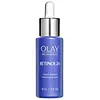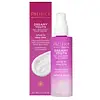What's inside
What's inside
 Key Ingredients
Key Ingredients

 Benefits
Benefits

 Concerns
Concerns

 Ingredients Side-by-side
Ingredients Side-by-side

Water
Skin ConditioningDimethicone
EmollientGlycerin
HumectantRetinol
Skin ConditioningRetinyl Propionate
Skin ConditioningNiacinamide
SmoothingPalmitoyl Pentapeptide-4
Skin ConditioningDimethiconol
EmollientC13-14 Isoparaffin
EmollientLaureth-4
EmulsifyingPolysorbate 20
EmulsifyingLaureth-7
EmulsifyingDisodium EDTA
Dimethicone Crosspolymer
Emulsion StabilisingPolyacrylamide
Titanium Dioxide
Cosmetic ColorantMica
Cosmetic ColorantDMDM Hydantoin
PreservativeIodopropynyl Butylcarbamate
PreservativeWater
Skin ConditioningHelianthus Annuus Seed Oil
EmollientEthylhexylglyceryl Palmitate
EmulsifyingAcetyl Hexapeptide-8
HumectantGlyceryl Stearate
EmollientCetyl Alcohol
EmollientPalmitoyl Tripeptide-3
Butyrospermum Parkii Oil
EmollientVitis Vinifera Seed Oil
EmollientAloe Barbadensis Leaf Juice
Skin ConditioningLaminaria Hyperborea Extract
Skin ProtectingTocopheryl Acetate
AntioxidantMagnesium Ascorbyl Phosphate
AntioxidantPrunus Amygdalus Dulcis Oil
Skin ConditioningHyaluronic Acid
HumectantTheobroma Cacao Seed Butter
EmollientPanthenol
Skin ConditioningAllantoin
Skin ConditioningXanthan Gum
EmulsifyingAlgin
MaskingAvena Sativa Bran
AbrasiveCocos Nucifera Water
MaskingIris Pallida Leaf Cell Extract
AntioxidantRosa Damascena Leaf Cell Extract
Skin ProtectingCichorium Intybus Root Oligosaccharides
Skin ConditioningCaesalpinia Spinosa Gum
Skin ConditioningCucumis Sativus Fruit Extract
EmollientPhenoxyethanol
PreservativeEthylhexylglycerin
Skin ConditioningPelargonium Graveolens Oil
MaskingWater, Helianthus Annuus Seed Oil, Ethylhexylglyceryl Palmitate, Acetyl Hexapeptide-8, Glyceryl Stearate, Cetyl Alcohol, Palmitoyl Tripeptide-3, Butyrospermum Parkii Oil, Vitis Vinifera Seed Oil, Aloe Barbadensis Leaf Juice, Laminaria Hyperborea Extract, Tocopheryl Acetate, Magnesium Ascorbyl Phosphate, Prunus Amygdalus Dulcis Oil, Hyaluronic Acid, Theobroma Cacao Seed Butter, Panthenol, Allantoin, Xanthan Gum, Algin, Avena Sativa Bran, Cocos Nucifera Water, Iris Pallida Leaf Cell Extract, Rosa Damascena Leaf Cell Extract, Cichorium Intybus Root Oligosaccharides, Caesalpinia Spinosa Gum, Cucumis Sativus Fruit Extract, Phenoxyethanol, Ethylhexylglycerin, Pelargonium Graveolens Oil
 Reviews
Reviews

Ingredients Explained
These ingredients are found in both products.
Ingredients higher up in an ingredient list are typically present in a larger amount.
Water. It's the most common cosmetic ingredient of all. You'll usually see it at the top of ingredient lists, meaning that it makes up the largest part of the product.
So why is it so popular? Water most often acts as a solvent - this means that it helps dissolve other ingredients into the formulation.
You'll also recognize water as that liquid we all need to stay alive. If you see this, drink a glass of water. Stay hydrated!
Learn more about Water